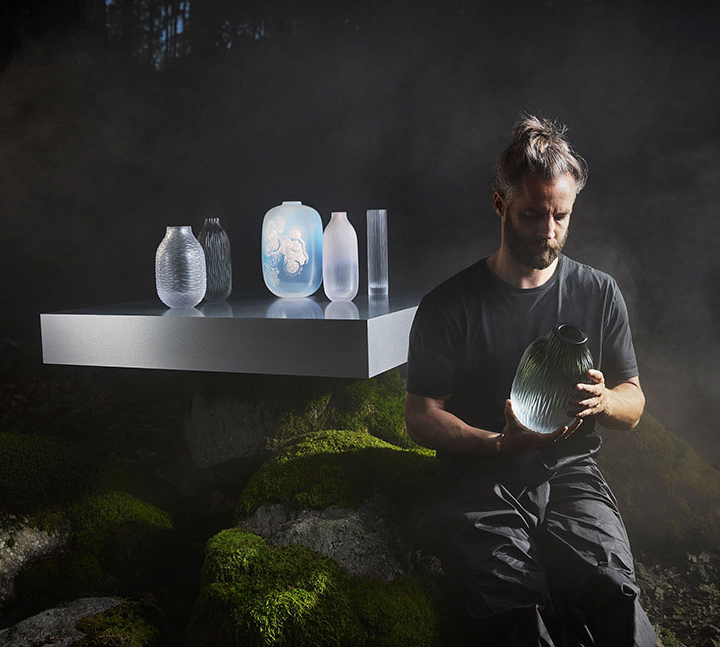
2023/10/11
Breadcrumbs navigation

Closer to naturalness, true values, and handcrafted work. These are the main thoughts behind the Soul of the Forest Collection. “Each time I step into the forest, I feel happy. I strive to remain always in contact with nature. I’m grateful that I could imprint the pleasant emotions I experience in the forest onto the new collection,” reveals its designer and Art Director at the Moser glassworks, Jan Plecháč.
The flawless natural structures awaken the senses. In today’s world where machine production virtually overshadows man, we cling even more to nature and the basic values of craftsmanship.“ To haptically perceive the precise cut, to touch the luxurious glass vase, to feel it over – this isn’t entirely common today. I’m convinced this is exactly what people need to experience,” says the collection’s author.
The collection evokes the same feelings and emotions as when strolling through the forest. The Pinea vase reflects the pine tree, Fungi has the gentle structure of mushroom spores, and Conea is adorned with the texture and colour of the Korean fir cone. The drinkware collection with the Bark vase embodies tree bark, while the Microcosmos vase and its engraving by illustrator Michal Bačák depict a microscopic perspective of the forest depths.
When creating, it’s typical of Jan Plecháč to seek contrasts. The same applies to the Soul of the Forest Collection. While the vases’ structures are taken from nature, the archetypal shapes are created and cultivated by man. At the same time, he returned the earthier, calmer colours discovered in the glassworks’ historic sample book to the current Moser portfolio.
A person can move freely when in nature, they can be themselves. The author decided to bring this same concept to the production process. For the majority of products in this new collection, the cutter doesn’t follow a drawing. He works only with the idea of how the object should look. “He should maintain the presence of the vase, but the result is completely up to him. His current mood or state of mind is reflected in the dynamic cut. This allows the piece to be more expressive or even gentler, yet always unique,” concludes Jan Plecháč.